Recycled Rubber, Rice Husks and Plastic Bottles: Sustainable Materials In Tyre Production
- By TT News
- February 14, 2023
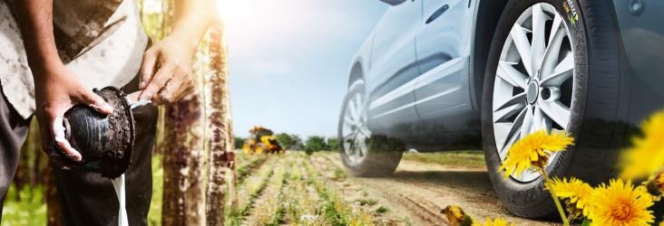
Continental is making huge strides in using sustainable and recyclable raw materials.
Car tyres are round, black and made of rubber. Look closer, however, and you’ll see that the design of tyres and the interaction of the various materials that go into making them are extremely complex. But for some time now, material experts and tyre engineers at Continental have been bringing about a silent revolution. By 2050 at the latest, all tyres are to be made of sustainable materials. There is still a long way to go until then. But step by step, it is already becoming apparent which raw materials will find their way into tyre construction in the future. These include waste products from agriculture (such as the ash from rice husks), rubber from dandelions, recycled rubber or PET bottles.
Claus Petschick, Head of Sustainability at Continental Tires, is clear about Continental’s mission, saying, “Continental is on the road toward becoming the most progressive manufacturer in the tyre industry in terms of sustainability. We aim to use 100 percent sustainable materials in our tyre products by 2050 at the latest. Our innovative power enables us to break new and even more sustainable ground. This encompasses everything from the origin and sourcing of our materials through to the reuse and recycling of our tyres.”
Already today, around 15-20 percent renewable or recycled materials are used in a standard passenger car tyre from Continental. To further increase the proportion of sustainable materials and conserve valuable resources, Continental continuously analyses and reviews all raw materials used in tyre production.
Perfect material matching for maximum safety
Depending on the application, season and environment, tyres have to fulfill specific requirements. This can be seen in, for example, the tread design. But in other areas – the composition of the rubber compound, for example – these changes are not so readily visible. Passenger car tyres from Continental consist of as many as a hundred different raw materials.
Their precise composition has a major impact on the tyres and their handling characteristics. The ability to deploy the various materials with their unique properties and interdependencies in specific ways is a complex balancing act for Continental’s engineers and material experts. Only when all the materials are ideally matched to each other can safe, energy-efficient and durable high-performance tyres be created.
Natural rubber still essential due to exceptional properties
Natural rubber is essential for ensuring outstanding tyre performance. This natural product accounts for between 10 and 40 percent of the entire weight of modern high-performance tyres. Its special properties include the high level of strength and durability, which are caused by the strain-induced crystallisation of the rubber. The tyre industry is the biggest consumer of global rubber production, accounting for more than 70 percent. However, Continental considers natural rubber a sustainable material only if it is sourced responsibly. Therefore, the company employs an integrated approach aimed at making the complex and fragmented supply chains for natural rubber more sustainable, including using cutting-edge digital technology, local involvement and close collaboration with capable partners with the goal of improving transparency and traceability along the entire value chain. Meanwhile, with its Taraxagum project, Continental is pursuing an innovative approach to ensure that it can become less dependent on natural rubber grown primarily in southeast Asia. The tyre manufacturer is working alongside partners on industrialising the extraction of natural rubber from specially cultivated dandelion plants.
Sustainable plant-based fillers
In addition to rubber, fillers such as silica are essential to tyre assembly. Silica, for example, helps to optimise characteristics such as grip, rolling resistance and tyre life. In the future, rice husks will be used as the source material for sustainably-produced silica. Rice husks are a waste product of rice production and cannot be used as food or animal feed. Silica derived from the ash of rice husks is more energy-efficient when used in manufacturing than that obtained from conventional materials such as quartz sand.
Plant-based oils, such as rapeseed oil and resins based on residual materials from the paper and wood industries, already offer an alternative to crude-oil-based fillers in Continental's tyres. Only oils that meet technical quality standards and are not suitable for consumption are used. Oils and resins allow for flexibility in terms of tyre compounds and so improve the material’s grip.
Expanding the circular economy
Continental is aiming for fully circular operations in its tyre production by 2050 at the latest. In addition to the use of renewable materials, the company is working systematically on using recycled raw materials in tyre production. This is intended to ensure that carbon black – another crucial filler in rubber compounds – can be obtained on a large scale in the future. Continental recently signed a development agreement with Pyrum Innovations with a view to further optimising the recycling of materials from old tyres. To do this, Pyrum breaks the old tyres down into their constituent parts in an industrial furnace using a special pyrolysis process. This way, valuable raw materials contained in end-of-life tyres can be extracted and recycled. Both companies are working towards obtaining high-quality raw materials from the pyrolysis oil obtained for Continental's tyre production in the medium-term, in addition to the direct use of high-quality carbon black. In the long-term, the tyre manufacturer and Pyrum are aiming to establish a closed loop circular economy concept for the recycling of old tyres.
Recycled rubber from end-of-life tyres
In addition to pyrolysis, Continental is also making use of mechanical processing of end-of-life tyres. Rubber, steel and textile cord in particular are separated from one another in a highly sophisticated process. The rubber is then prepared for re-use as part of new rubber compounds.
Continental has a long history of working consistently to introduce end-of-life tyres into the circular economy to conserve resources and the environment. A material known as Conti-Reclaim has been obtained as part of the truck tyre retreading process at the company’s plant in Stöcken in Hanover since 2013. It has been used in tyre production at Continental for years. To expand the range of applications for the recycled rubber and optimise the properties for the various fields of application, Continental uses not only Conti-Reclaim but also recycled rubber from other suppliers.
Recycled plastic bottles in tyre casing
“Recycled raw materials are going to play a big role in making tyres more sustainable. We use recycled materials whenever possible. Comparable quality and material properties to conventional raw materials are crucial for us,” says Petschick.
For example, Continental is working with partners to obtain high-quality polyester yarn for its tyres from recycled PET bottles. PET bottles often end up in incinerators or landfills otherwise. With its ContiRe.Tex technology, the tyre manufacturer has developed a more energy-efficient and eco-friendly alternative that allows it to reuse between nine and fifteen plastic bottles for each tyre, depending on the tyre size. The recycled PET has already replaced conventional polyester in the structures of some tyre casing. The PET bottles used are sourced exclusively from regions where there is no closed recycling loop.
Systematically moving toward greater sustainability
Continental is working to advance innovative technologies and sustainable products and services throughout its entire value chain, from sourcing sustainable materials to recycling end-of-life tyres. The company is aiming to achieve 100 percent carbon neutrality by 2050 at the latest.
India Opens Anti-dumping Probe Into Halobutyl Rubber Imports From China, Singapore And US
- By Sharad Matade
- November 06, 2025

India has launched an anti-dumping investigation into imports of Halo-Isobutene-Isoprene Rubber (HIIR) from China, Singapore and the United States, following a complaint from Reliance Sibur Elastomers Private Limited, the Directorate General of Trade Remedies (DGTR) said in a notification.
The domestic producer alleged that the three countries were exporting the rubber to India at unfairly low prices, causing injury to the local industry. The company has sought the imposition of anti-dumping duties on the product, which is used in tyre inner liners, hoses, seals, tank linings, conveyor belts and protective clothing.
The DGTR said there was prima facie evidence that imports had risen “significantly” and were being sold below normal value, resulting in price depression and affecting the domestic manufacturer’s capacity utilisation and profitability. The authority noted that the dumping “is causing material injury to the domestic industry”.
The investigation will cover the period from July 2024 to June 2025, with an examination of injury trends dating back to April 2021.
HIIR, also known as halobutyl rubber, is classified under the broader synthetic rubber tariff category. Reliance Sibur Elastomers is currently the only producer of the material within India.
If the investigation confirms dumping and injury, the DGTR may recommend the imposition of duties to offset the impact and “remove the injury to the domestic industry”. Interested parties have 30 days to submit data and make their representations to the authority.
Global Carbon Black Market To Hit USD 44.8 Bln By 2034, Driven By Tyre And Autom Demand
- By TT News
- November 06, 2025

The global carbon black market is projected to grow from USD 27.88 billion in 2024 to USD 44.77 billion by 2034, expanding at a compound annual growth rate (CAGR) of 4.85 percent between 2025 and 2034, according to a new report by Towards Chemical and Materials, a research arm of Precedence Research.
The study estimates that the global market volume will rise from around 15.15 million tonnes in 2025 to 21.83 million tonnes by 2034, growing at a CAGR of 4.14 percent, driven primarily by increasing demand for tyres, automotive components and high-performance plastics.
Carbon black – a fine black powder made through the incomplete combustion of hydrocarbons – is a critical material used to reinforce rubber in tyre production and enhance strength, durability and UV resistance in plastics, coatings, and batteries.
Asia Pacific accounted for about 58 percent of global market share in 2024 and is expected to remain the largest and fastest-growing regional market, supported by expanding tyre and rubber manufacturing bases in China, India and Southeast Asia. The region’s carbon black market was valued at USD 16.95 billion in 2025 and is projected to reach USD 26 billion by 2034.
“The Asia Pacific region continues to lead both in production and consumption of carbon black, owing to its strong automotive, tyre and plastics industries,” the report noted, adding that China remains the world’s largest producer and consumer.
The furnace black segment dominated the market in 2024, accounting for about 60 percent of global industry share, due to its superior reinforcing properties in tyres and versatility in plastics and coatings. Meanwhile, the tyres and rubber products segment held a 55 percent share, reflecting the material’s indispensable role in the automotive sector.
Performance applications such as batteries, conductive polymers, and specialty coatings are emerging as key growth drivers. Demand for specialty carbon black and conductive grades is rising with the proliferation of electric vehicles, renewable energy systems, and electronics manufacturing.
Artificial intelligence (AI) is also shaping the carbon black industry, with automation and predictive analytics enhancing process efficiency, product consistency, and sustainability, the report said. AI-driven systems are enabling real-time monitoring and predictive maintenance in production plants, reducing waste and energy consumption.
Sustainability remains a key trend, with manufacturers investing in greener technologies, renewable feedstocks and recovered carbon black (rCB) from recycled tyres to meet circular economy goals. “Turning end-of-life tyres and rubber waste into recycled carbon black is opening new sustainable pathways for producers,” the study noted.
Among key players profiled in the report are Tokai Carbon Co., Ltd., Continental Carbon, Jiangsu C-Chem Co., Ltd., Himadri Speciality Chemical Ltd., Sid Richardson Carbon & Energy Company, Cancarb Limited, Philips Carbon Black Ltd., OCI Company Ltd., Columbian Chemicals Co. (Birla Carbon), Aditya Birla Group, and Raven SR, LLC.
Recent industry developments include PCBL Chemical Ltd.’s establishment of a wholly owned US subsidiary in Delaware in July 2025 to enhance supply chain localisation and strengthen its North American footprint, as well as the West Bengal government’s efforts to attract foreign investment in its carbon black industry to support the electric vehicle, tyre, and battery markets.
The report also forecasts rapid growth in North America, fuelled by clean manufacturing practices, sustainable process adoption and expansion in high-performance plastics and battery applications. Europe, meanwhile, is benefiting from stricter environmental regulations and the EU Green Deal, which are promoting eco-friendly and specialty grades.
The global carbon black market is expected to maintain steady long-term growth as manufacturers diversify into advanced applications and invest in sustainable production technologies to meet evolving industrial and environmental demands.
Kraton To Streamline Berre Polymer Operations Focus
- By TT News
- October 26, 2025
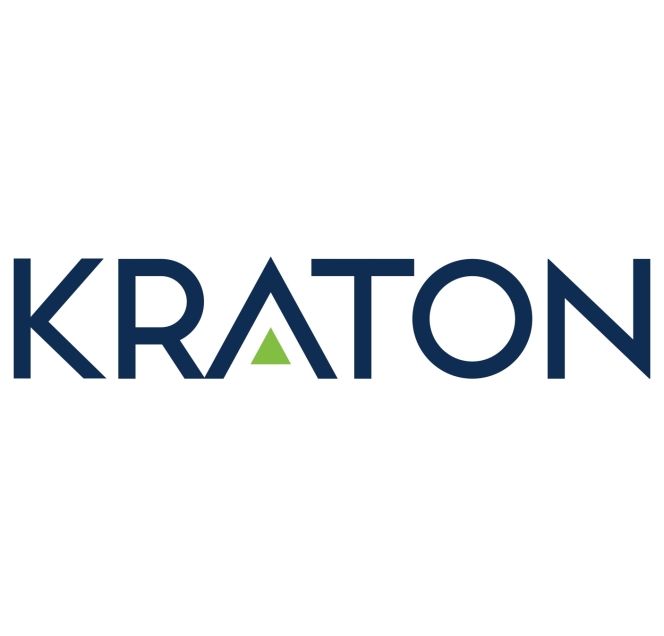
Kraton Corporation, a leading global producer of speciality polymers and high-value biobased products derived from pine chemicals, has revealed a new strategic initiative for its Berre, France facility. The plan involves streamlining its polymer operations to concentrate exclusively on manufacturing USBC products, which will result in the cessation of HSBC production at that site.
This move is designed to bolster Kraton's long-term competitiveness by optimising its manufacturing footprint in reaction to a global overcapacity for HSBC. The company has formally started an information and consultation process with the local Works Councils, with a final decision expected following this mandatory period. The company has reaffirmed its commitment to supplying HSBC from its broader global network and to leveraging its worldwide presence to continue adapting to market demands.
Prakash Kolluri, President, Kraton Polymers, said, “Our aim with this plan is to strengthen Kraton’s long-term competitive position by optimising our manufacturing footprint in response to changing market dynamics associated with global overcapacity of HSBC production capability. With this step, we are preparing Kraton for a sustainable future by securing Kraton’s position as the leading global HSBC producer. Kraton is fully committed to supporting our customers through this transition with supply of HSBC products produced within our unmatched global manufacturing network. We recognise the impact of these actions, and are committed to a safe, respectful and supportive transition. The health, safety and well-being of the employees remain our top priorities.”
Continental Advances Circular Economy In Tyres By Expanding Use Of Recycled Materials
- By TT News
- October 23, 2025
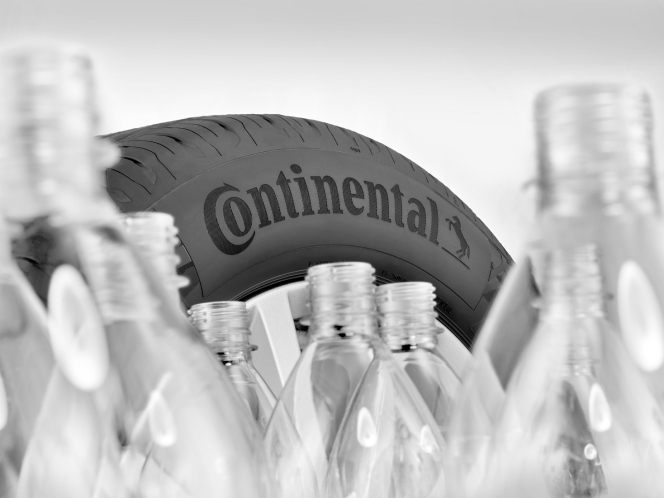
Continental is accelerating its transition towards a circular economy by systematically increasing the use of renewable and recycled materials in its tyres. The company, which averaged a 26 percent sustainable material share in 2024, has set an ambitious target to raise this to at least 40 percent within five years. This strategy involves not only internal innovation but also actively encouraging its supply chain to develop and provide more sustainable raw materials.
A critical area of development is finding green alternatives for reinforcement materials like steel and textiles, which are essential for tyre safety, durability and performance. These materials can constitute over 18 percent of a passenger car tyre, and even more in commercial vehicle tyres. Continental is already integrating recycled steel and is pioneering the use of polyester yarn made from recycled PET bottles. Depending on the tyre size, the carcass of a single passenger car tyre can incorporate the equivalent of up to 15 bottles. This recycled polyester, developed with partner OTIZ, is verified to cut CO₂ emissions by approximately 28 percent compared to conventional materials and is already featured in production tyres like the UltraContact NXT.
The company's sustainable material portfolio extends beyond reinforcements. It includes synthetic rubber derived from used cooking oil, bio-based resins from waste streams and silica obtained from rice husk ash. Complementing these material advances is a commitment to greener manufacturing processes. Together with Kordsa, Continental has developed COKOON, an adhesion technology that bonds textiles to rubber without harmful chemicals. In a move to uplift the entire industry, this innovative solution has been made available to all tyre manufacturers as a free, open-source license, demonstrating Continental's broader commitment to fostering industry-wide sustainability.
Dr Matthias Haufe, Head of Material Development and Industrialization, Continental Tires, said, “We are not reinventing the wheel – but we are reinventing the tyre, with more sustainable materials and more environmentally compatible production processes. It’s not just about the rubber itself. We also focus on the materials that give the rubber its shape and make tyres stable and safe. Recycled steel and polyester yarn made from recycled PET bottles are important for more sustainable tyre production. Our goal is to use at least 40 percent renewable and recycled materials in our tyres within five years. Every alternative material brings us an important step closer to this goal. When it comes to sustainability, it’s not just the materials we switch to, but also those we deliberately do without.”


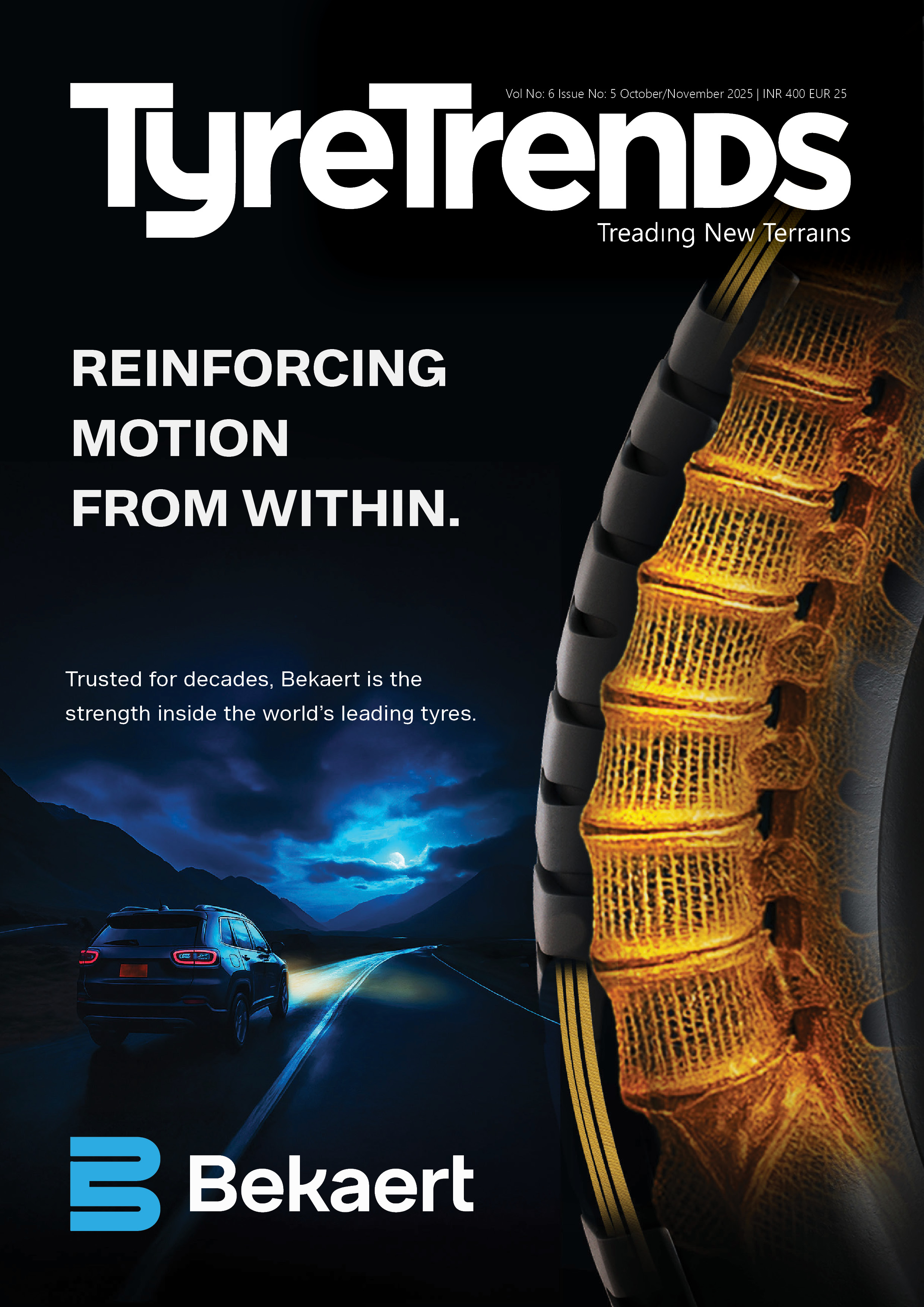



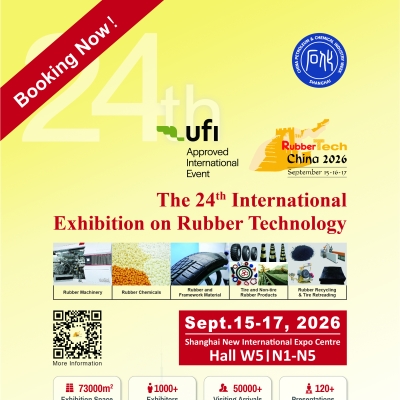
Comments (0)
ADD COMMENT